The best outdoor subwoofer is one of those things that you never know you needed until you have it. But once you have experienced the sheer power of an outdoor sub, it's hard to go back.
Outdoor subs are generally bigger and more powerful than their indoor cousins - they need to be in order to cope with the extra distance sound has to travel when bouncing off the earth. This makes them a little more expensive, but for many people, it's worth it for the extra bass boom on hot summer nights.
If your budget is tight or space is limited, we recommend going for a compact model such as the JBL SUB300P or Yamaha YSP-2300. These subs won't blow your windows out but will still add a nice low-end bump to your tunes without taking up too much room in your backyard or patio furniture. If your outdoor space isn't an issue, then consider one of the big guns like the SVS PB16-Ultra, OSD Audio, or Polk Audio Atrium SUB if you're looking for a top-tier thump!
We hope you find your next favorite thing from the list below! Each product was independently selected by our editors. ConsistentReviews may collect a share of sales or other compensation from the links on this page if you decide to buy something (that's how we stay in business). We hope you find your next favorite thing!
How We Choose
To find the best outdoor subwoofer, we looked at a variety of factors including power and size, as well as customer reviews. We also read through various manufacturer specifications to get an idea of what features are most important in an outdoor subwoofer. After taking all of this information into consideration, we were able to narrow down our list to only the absolute best outdoor subwoofers based on their power and size capacities as well as the features they offer.
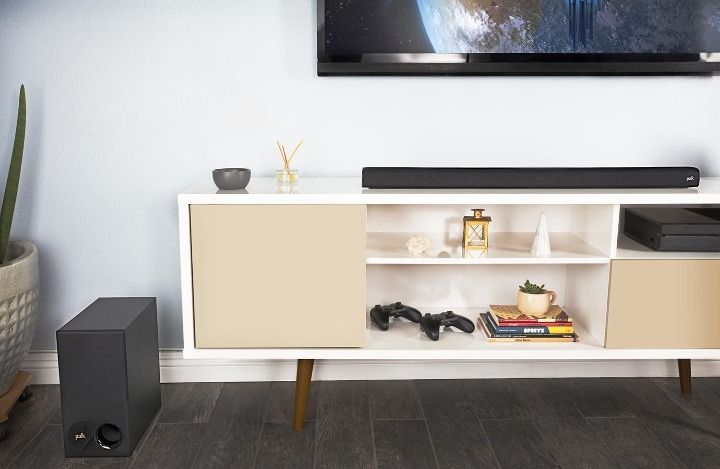
Polk Audio Signa S2 Bluetooth Enabled, Black S2 Soundbar + Subwoofer
A Premium Ultra-Slim Sound Bar with Included Wireless Subwoofer.
Why We Love It
The Polk Audio Signa S2 is one of the best soundbars you can buy for your TV, and that's not just because it was made by Polk. This slim, elegant soundbar packs a lot of punch for its size.
What You Should Know
The included wireless subwoofer means you can get booming bass even if you're in front of the telly, while the HDMI and optical cables mean setup is super quick. The audio quality is excellent too – we streamed a couple of tracks from Spotify through Bluetooth on an iPhone 7 Plus and heard clear vocals across all genres.
The only downside is that it doesn't come with any speakers so you'll have to buy some separately if you want to use them with another device (like a gaming system). However, they are pretty good on their own too - especially considering how cheap this thing is!
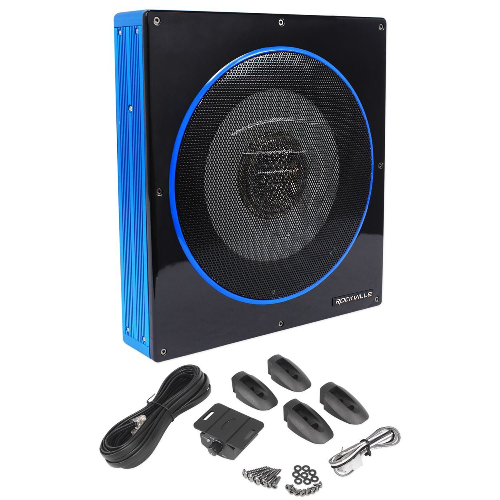
Rockville RW10CA 10" 800 Watt Slim Low Profile Active Powered Car Subwoofer Sub
Thermal Protection Circuit, Short Protection Circuit.
Why We Love It
The Rockville RW10CA is a very impressive subwoofer that can be used in cars, trucks, boats, and RVs. It's a slimline design so it doesn't take up too much room but still packs plenty of punch for your music or movies.
What You Should Know
The bass is tight and clean with no distortion even at higher volumes. The auto turn-on feature means you don't have to worry about fiddling with the power button when you want to use it. There are inputs for both low-level and high-level, which makes it easy to hook up the speaker wire to your favorite device without having to do any additional work.
You can also adjust the sensitivity on the remote control so it works from further away if needed - just make sure you get enough signal strength before doing this though as some devices won't work well if there's not enough power behind them.
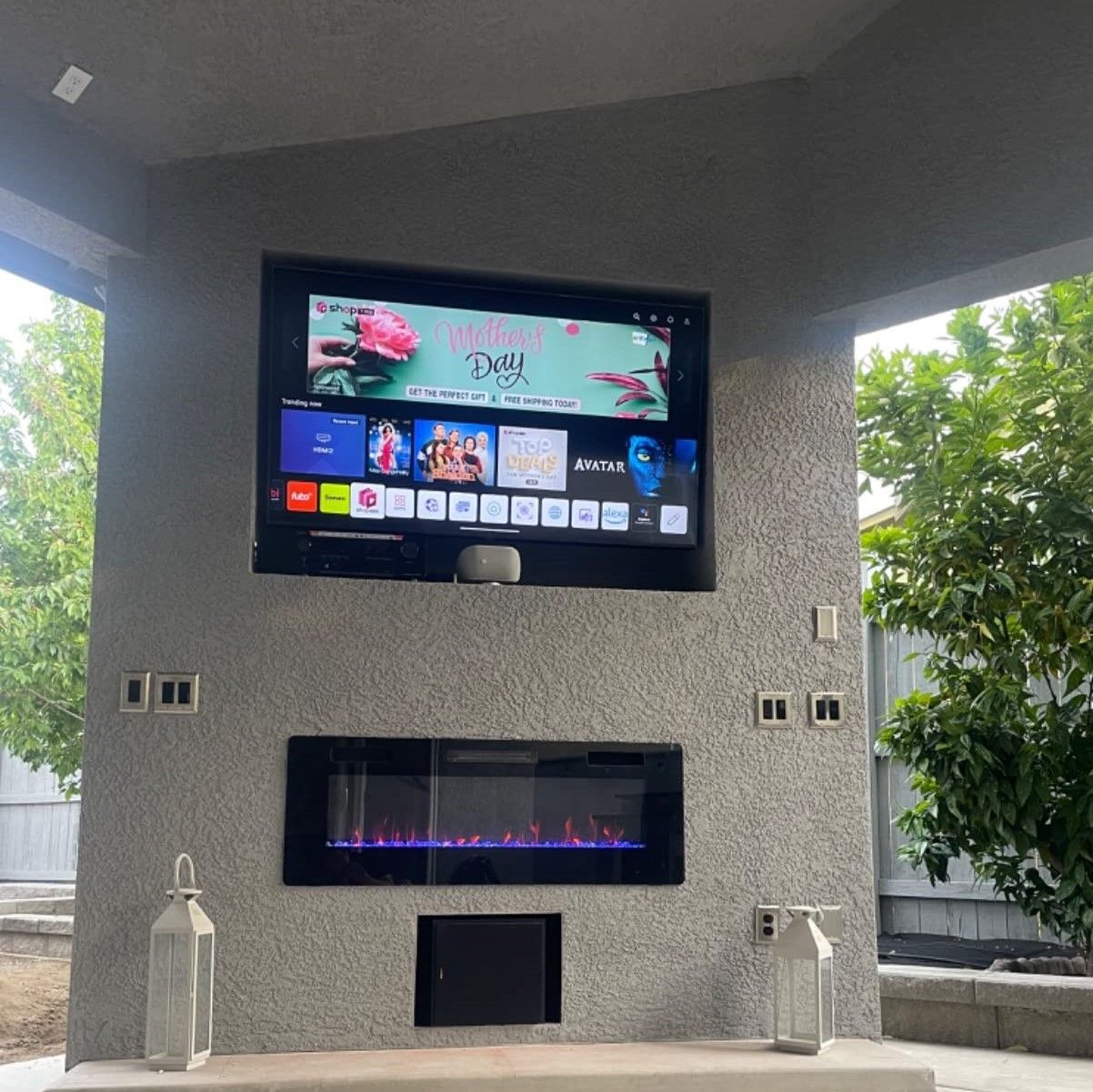
Klipsch R-100SW 10" Subwoofer, Incredibly Deep Bass, and an All-digital Amplifier
All Digital Amplifier With 300 Watts Peak Power
Why We Love It
The Klipsch R-100SW is a 10-inch subwoofer that packs in some serious power. It's an all-digital amplifier, which means you get to enjoy 300 watts of power and super-low distortion.
What You Should Know
The frequency response is 32Hz to 120Hz with a 3dB slope, so it covers the whole range of human hearing. The crossover has sliders for phase control and low pass filter selection, so you can tailor the sound to suit your room.
The bass output is impressive too – this thing can really rumble when you turn it up loud. At 150W per channel, we were impressed by how deep these could go without distorting or losing clarity.

Sound Storm Laboratories LOPRO10 10 Inch Powered Under Seat Car Audio Subwoofer
Deep Bass Low Profile
Why We Love It
The Sound Storm LOPRO10 is a compact subwoofer that packs a punch thanks to its 1200W power output. This means it can produce deep, booming bass notes with minimal distortion even at high volumes.
What You Should Know
The LOPRO10 has two sets of RCA inputs so you can hook it up to your car stereo and an amplifier if you prefer to use separate speakers instead of the built-in unit. The MOSFET power supply also ensures clean sound quality without any interference or buzzing.
The variable Low Pass Filter helps eliminate unwanted low-frequency sounds from interfering with the bass notes you want to hear, and there's also a Bass Boost feature for fine-tuning the sound as needed.
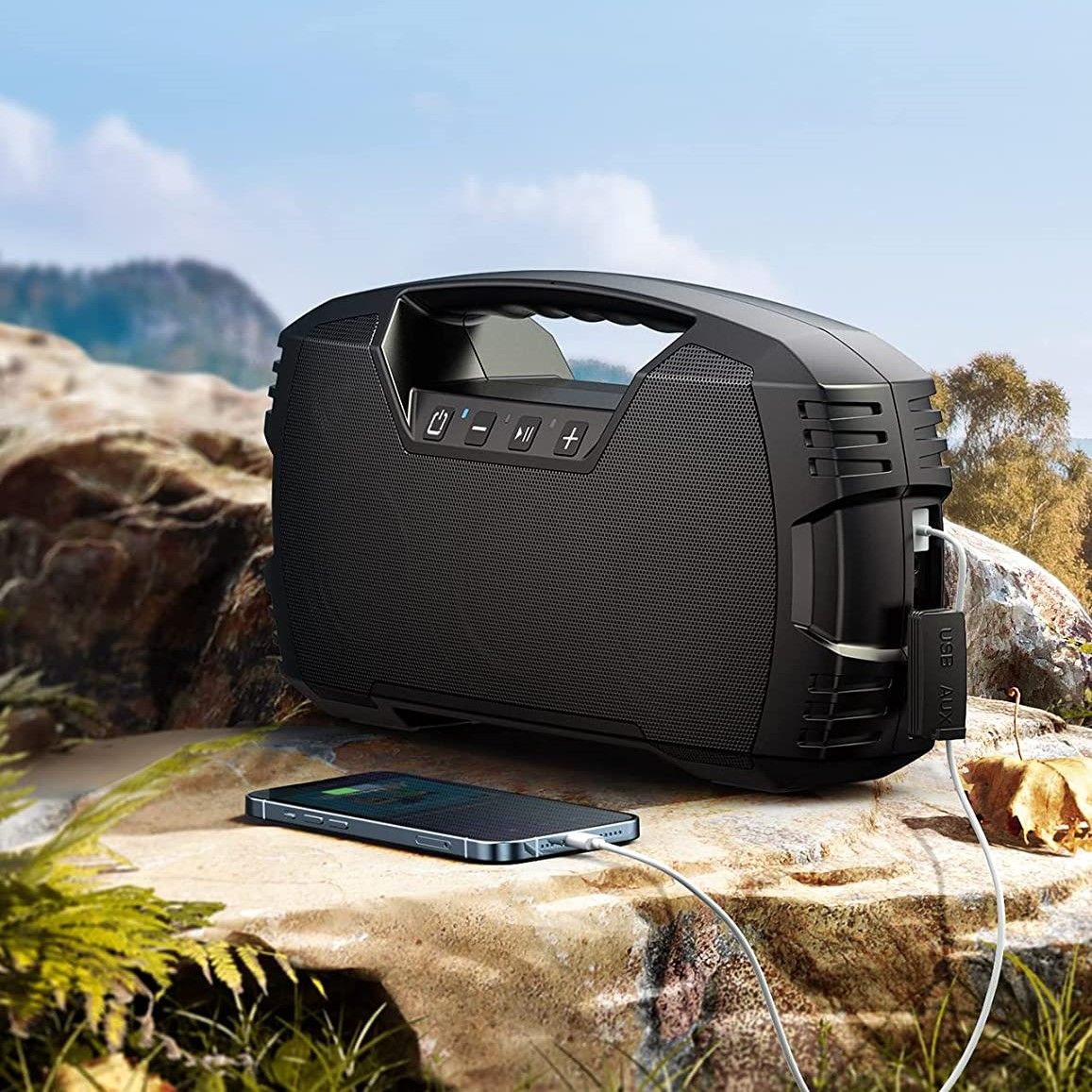
IPX7 Waterproof Bluetooth Speaker, 40W Portable Wireless Speaker with Subwoofer
Powerful Stereo Speaker
Why We Love It
The Houl Zallee IPX7 Waterproof Bluetooth Speaker is our favorite pick for a powerful stereo speaker. Featuring 4 dedicated drivers with 2 15W full-range drivers and 2 5W tweeters, it delivers 40W surround sound (peak 60W) with virtually no distortion, giving you great quality music and excellent sound. Plus, it’s rugged enough to meet IPX7 waterproof standards and can even float on water and survive being fully submerged in 3.3 feet of water for up to 30 minutes.
What You Should Know
This speaker is perfect for outdoor adventures and livening up parties. It features a left-right stereo pair to create 80W immersive stereo sound and you can even take hands-free calls or use it as a conference speaker.
The Houl Zallee IPX7 Waterproof Bluetooth Speaker is a great choice for outdoor events and parties, so get yours today and start enjoying your music in style!
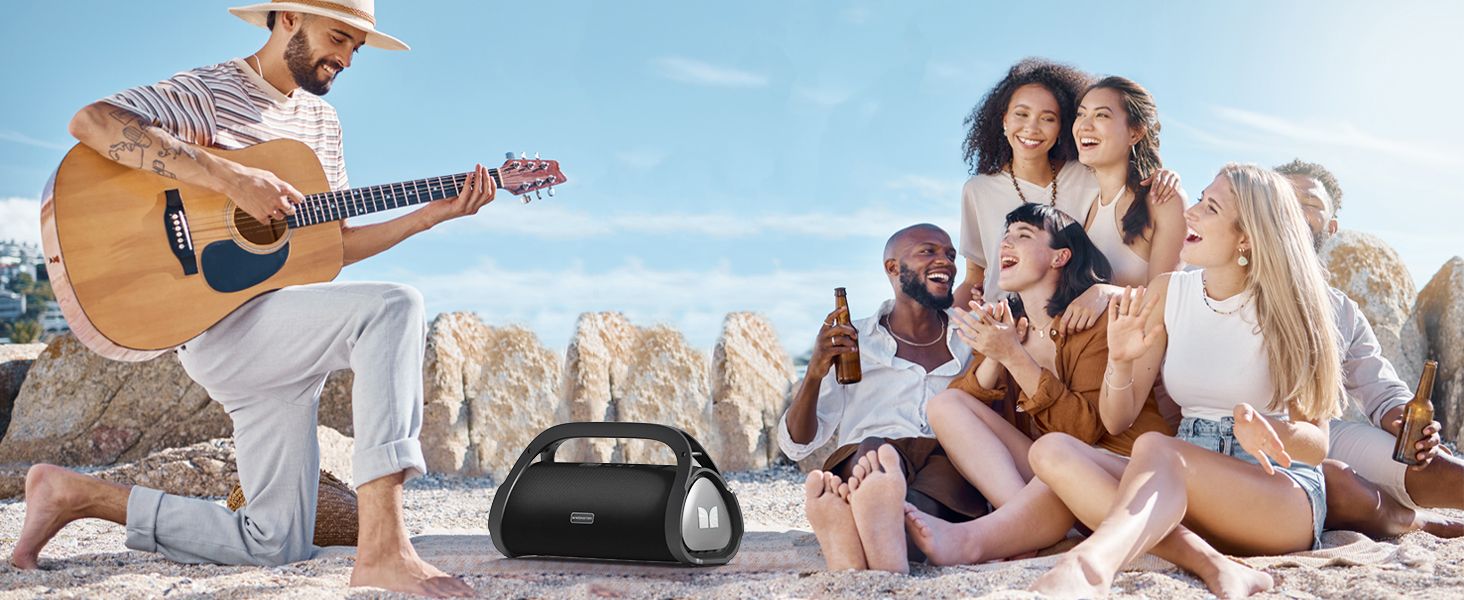
Monster IPX7 Waterproof Outdoor Bluetooth Speakers with Double Subwoofer
Incredible Stereo Sound & Powerful Deep Bass Speakers
Why We Love It
The Monster Adventurer Max is a unique and powerful speaker that can be used both indoors and outdoors. The subwoofer built into this model is especially adept at delivering deep bass, making it ideal for playing music that demands a lot of low-end.
What You Should Know
The waterproof design means you can take this to the beach or boat without worrying about damaging it, while Bluetooth 5.0 ensures fast connection speeds so you don't have to worry about laggy playback. The battery life on these speakers is also impressive, with up to 24 hours of playtime per charge meaning you can take them anywhere without having to worry about charging them up too often.
You won't get the best sound quality out of these speakers though - they're not going to replace your dedicated hi-fi system but they will deliver great sound for casual listening in the garden or at the beach.
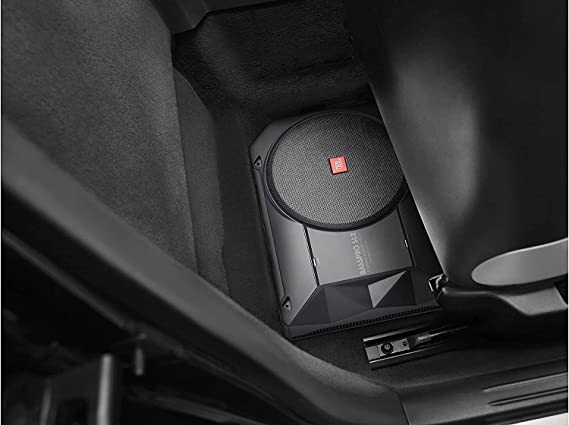
JBL BassPro SL 8-inch 125W RMS Powered Under-Seat Compact Subwoofer
Optional Wired Bass Remote Controller
Why We Love It
The JBL BassPro SL is a compact subwoofer enclosure that's ideal for under-seat use. It features an 8-inch driver and 250 watts of power handling, making it powerful enough to fill a car with sound.
What You Should Know
The bass on this subwoofer is rated at a whopping 120Hz, which means you'll hear deep, booming sounds when listening to your favorite songs. The built-in microphone allows you to easily control the bass from your phone or other device through Bluetooth or AUX, so you can take calls without having to reach for your phone.
This speaker also has auto-on functionality that will turn itself on when it detects sound, so you don't have to worry about fumbling around with buttons in the dark trying to find the right volume level.
Best Outdoor Subwoofer FAQs
If you're looking to add a subwoofer to your outdoor entertainment set, it can be tough knowing which one is best for you. There are a ton of options out there and not all of them are created equal.
You don't want to end up with a dud that doesn't work with your system or worse breaks and leaves you hanging on the phone with customer service trying to get a replacement! We've compiled the most Frequently Asked Questions about subwoofers so that you can make an informed decision when purchasing yours. With this information, there'll be no more questions left in your mind about how best to choose the perfect outdoor subwoofer for your needs!
Are Outdoor Subwoofers Worth It?
The answer to this question depends on your situation. If you want to make the most of a home theater system, then an outdoor subwoofer will give you much more bass than traditional indoor subwoofers, and it will likely be felt more strongly by your audience.
Most people who choose outdoor subwoofers do so because they often have large groups over for parties or barbecues and want to provide some extra boom to their sound system. This is especially important if you live in an area where there are a lot of thunderstorms that often produce very low bass frequencies.
If you live in an area with earthquakes, these systems may also come in handy as extra protection for your basement or foundation wall speakers against damage from sudden movements below ground level. However, keep in mind that many cities now actually require special earthquake insurance before allowing homeowners' insurance policies. So while these systems may protect your belongings from damage caused on the ground or by natural disasters, they may not cover the entire cost of repairs afterward unless you've opted for coverage beforehand.
Do Outdoor Subwoofers Work?
While it's easy to dismiss the concept of a subwoofer in an outdoor setting - after all, it is outside and therefore exposed to the elements - they can provide surprisingly good sound. This is because they are designed to put out substantial amounts of bass without distortion, and many models boast waterproofing features like sealed connections and rubber-coated cabinets.
If you're going with an outdoor subwoofer, it's important to choose wisely so that you get the most out of your investment. While $100 or less may seem like a bargain for a powerful subwoofer, if it doesn't stand up to rain or other extreme weather conditions, you won't be satisfied with its performance long term.
The size of your budget also impacts what kind of outdoor subwoofer you can purchase. Cheaper options tend to be smaller and have less wattage (200 watts or less) while more expensive models have wattages up to 1000 watts or more and come with bigger cabinet sizes (upwards of 15 inches). These will create louder bass that travels further across open spaces like backyards or parking lots at events like block parties or picnics.
Can You Use the Indoor Subwoofer Outside?
Generally speaking, no. Subwoofers are intended for indoor use only. Some subwoofers have weatherproof outdoor speakers feature that make them suitable for outdoor use (usually rated IPx4 or IPx5), but they're not designed to be used in the rain or snow. They also tend to have weaker power amps and lower-quality woofers compared to their indoor counterparts. If you do choose to take your subwoofer outside, make sure it's adequately secured and protected so it doesn't get damaged by the elements.
Should the Subwoofer Be Inside Or Outside Speakers?
It's generally considered that having your subwoofer inside your bookshelf speakers is the best way to go. This will ensure that the sound from the subwoofers blends in with your main speakers and helps create a more even bass response overall.
However, if you're choosing a budget speaker system, it may not be possible or affordable to include an additional subwoofer inside your bookshelf speakers. In this case, it's recommended to place your subwoofer outside of your main bookshelf speakers. This will still give you better bass than having no subwoofer at all, but it won't provide quite as much flexibility in terms of tuning and blending sounds together compared to placing them internally.
Are 2 Subwoofers Always Better Than 1?
It's a common misconception that you always get more bass from having two subwoofers rather than one. While it's true that having two subwoofers playing together can produce more bass overall, the question is whether or not your ears will be able to detect the difference in comparison to a single subwoofer.
While this theory was first brought up by Sir Alfred Hitchcock, it wasn't tested scientifically until 1964, when Dr. Shneider and Dr. Roberts published their findings in The Journal of the Acoustical Society of America. The pair performed tests on 84 subjects, playing them sound through either 1 speaker or 2 speakers at varying volumes while they wore earplugs with varying amounts of foam across the ear canal opening. When both subwoofers were playing at high volume levels (70-80 dB), they found that 51% of participants correctly identified which had more bass; however, when only one played at moderate volume (50-60 dB), almost 100% correctly identified which had more bass — even though the low volume level was far below what people would tune their systems for maximum output.
Where Should I Put My Outdoor Subwoofer?
The ideal location for your subwoofer is outside, in a well-ventilated room (not an enclosed garage) where there's plenty of outdoor space to position the sub and satellites. This way, you'll get the best sound with minimal distortion. Positioning can be tricky when you're also trying to avoid squirrels, foxes, and other critters attracted by your subwoofer's delicious power cord.
To find the right spot, start with a good map of your property showing potential satellite locations (menus at restaurants work great). Then drive stakes into the ground to mark the satellite speakers in locations that won't be blocked by trees or bushes. Next, connect all three satellites together using cable ties (redundant ones are best; squirrels love chewing on cords!). Now move them around in different configurations while playing some music until you find a combination that sounds best: no bass overlap with excessive phase cancellation and balanced volume levels throughout the room. You might need to use duct tape or twist ties to attach cables securely so they don't get chewed up—or stolen!
Why Audiophiles Hate Subwoofers?
Subwoofers are frequently criticized by audiophiles for three main reasons. 1) Low bass frequencies, below about 100Hz, can physically damage speakers by causing over-excursion. If your speakers are rated to handle lows up to 50Hz and you play a recording with an in-ground subwoofer with a bass of 20Hz, there's the potential that the speaker could be damaged unless you have some sort of protection circuitry in place (like a line driver or an anti-subwoofer filter). 2) Subwoofers don't play all frequencies at equal volumes: generally speaking, the lower the frequency being played, the less volume it has. This is because lower notes require larger cone movement and therefore more power; higher notes need less power and so they get louder faster. 3) Human ears aren't very good at detecting extremely low bass frequencies anyway – below around 40Hz or so. You may not hear bass properly even with no subwoofer playing! So why include them? Well, actually most sound engineers agree that some low bass notes do enhance movie soundtracks significantly – especially explosions and other similar scenes – but only down as far as about 30Hz or so.
Do Subwoofers Hit Harder Facing Up?
Yes, but only slightly. Subwoofers are typically mounted in a sealed box, which means they're firing sound downward toward the floor. Since subwoofers specialize in low frequencies, this is exactly where you want them to be working hardest.
When speakers sound placed on their sides with the ports facing up, subwoofers will have an easier time handling smaller bass notes located at higher frequencies. This is because there's less air pressure being applied to the membrane inside the speaker cabinet that's pushing back against it and creating distortion.
Why Do Outdoor Speakers Need An Amp?
Since wattage is the measurement of power, it's important to make sure you get a speaker that has enough wattage for your needs. This is especially true if you live in an area with lots of hills or trees – since those impediments can block signals and reduce volume, you may need more wattage than most outdoor speakers with a range of 100 feet would offer.
In addition, while many manufacturers use “peak” wattage measurements on their product pages when they're being most boastful about how much power their speakers might consume, what we care about most is RMS (root mean squared) wattage. This indicates the average amount of power being provided by outdoor speakers over time rather than at a momentary peak. If you see RMS listed on any speaker info page, that's the number to pay attention to.
How Many Years Do Subwoofers Last?
The lifespan of subwoofers depends on how well you treat them. High volume for extended periods of time is a surefire way to burn out your subwoofers, so be mindful of the power output and volume settings when using them. If you follow the manufacturer's guidelines and take care of your subwoofers by cleaning them properly, storing them in good condition, keeping the connections secure, and making sure they have enough ventilation, your subwoofers can last anywhere from five years up to 20 years or more depending on their quality and brand.
The best outdoor subwoofer should offer high levels of sound quality, low-frequency extension, and deep bass. It should also be able to withstand the harsh conditions associated with outdoor use, such as humidity, dust, and extreme temperatures. Additionally, it should come packaged with accessories such as RCA cables or run speaker wire for easy connection to an amplifier or receiver. All in all, the outdoor subwoofer is a great choice for those looking to enhance their music experience with deeper lows without disturbing the neighbors.
most indoor subwoofers








